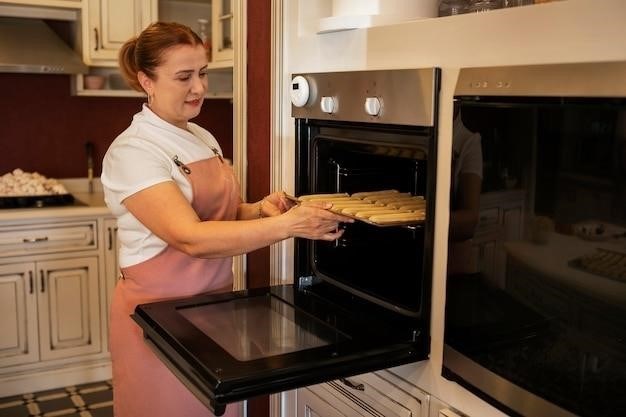Small Unit Tactics⁚ A Comprehensive Guide
Small unit tactics are the foundation of modern warfare‚ and mastering them is essential for success on the battlefield. This comprehensive guide provides a deep dive into the principles‚ techniques‚ and applications of small unit tactics‚ focusing on the squad and platoon levels. We explore the importance of fire and movement‚ the role of leadership‚ and the impact of technology in shaping contemporary small unit operations. The guide also examines common battle drills‚ formations‚ and the evolving nature of small unit tactics in the 21st century. Whether you are a seasoned military professional or a civilian interested in understanding the intricacies of warfare‚ this guide offers a valuable resource for gaining insight into the vital role of small unit tactics in modern conflict.
Introduction to Small Unit Tactics
Small unit tactics refer to the coordinated actions and maneuvers employed by small military units‚ typically at the squad and platoon level. These tactics are crucial for achieving mission success in combat operations‚ as they involve the effective use of fire‚ movement‚ and communication to overcome enemy forces and achieve objectives. Small unit tactics are not simply a collection of pre-determined actions; they are a dynamic and adaptable approach to warfare that requires flexibility‚ initiative‚ and the ability to react to changing circumstances. In essence‚ they are the foundation upon which larger military operations are built‚ enabling units to effectively engage the enemy‚ control terrain‚ and achieve decisive results.
The concept of small unit tactics has evolved throughout history‚ adapting to technological advancements‚ changing battlefields‚ and evolving doctrines. From the disciplined formations of ancient armies to the more decentralized and adaptable approaches of modern warfare‚ small unit tactics have always played a critical role in determining the outcome of conflict. Today‚ with the increasing reliance on technology and the growing complexity of the battlefield‚ small unit tactics have taken on even greater significance. Understanding the principles‚ techniques‚ and applications of these tactics is essential for any military professional or individual seeking to gain a deeper understanding of modern warfare.
The Importance of Small Unit Tactics in Modern Warfare
Small unit tactics hold immense importance in modern warfare‚ as they form the bedrock of effective combat operations. In today’s complex and dynamic battlefields‚ where adversaries often employ asymmetric tactics and exploit technological advancements‚ the ability to operate effectively at the squad and platoon level is paramount. Small unit tactics enable forces to maintain situational awareness‚ adapt to rapidly changing circumstances‚ and achieve mission objectives in the face of unpredictable threats.
Furthermore‚ the emphasis on decentralized decision-making in modern warfare underscores the critical role of small unit tactics. Soldiers operating at the squad and platoon level are often required to make independent decisions based on their understanding of the situation and their ability to adapt to changing circumstances. This necessitates a high level of tactical proficiency‚ a deep understanding of the principles of fire and movement‚ and the ability to effectively utilize available resources. In essence‚ small unit tactics provide the framework for achieving mission success in a highly dynamic and unpredictable environment‚ where the ability to adapt and improvise is essential for survival.
Key Principles of Small Unit Tactics
Small unit tactics are built upon a set of fundamental principles that guide their application in various combat situations. These principles‚ while seemingly simple‚ provide a framework for effective decision-making and action at the squad and platoon level. They ensure that units maintain situational awareness‚ control the battlefield‚ and effectively engage the enemy while minimizing casualties.
One of the key principles is the concept of “fire and movement‚” which emphasizes the coordinated use of fire to suppress the enemy while simultaneously maneuvering to a more advantageous position. This principle ensures that units maintain a tactical advantage by maximizing their firepower while minimizing their vulnerability. Another critical principle is the importance of leadership. Small unit leaders play a pivotal role in ensuring the unit’s success by providing direction‚ motivation‚ and tactical guidance. They are responsible for maintaining unit cohesion‚ enforcing discipline‚ and ensuring that all members understand and execute the tactical plan.
Furthermore‚ the principles of small unit tactics emphasize the need for effective communication‚ coordination‚ and mutual support. Units must be able to communicate effectively‚ both within the unit and with higher headquarters‚ to ensure that they are aware of the situation and can coordinate their actions. Finally‚ the principles of small unit tactics recognize the importance of discipline‚ training‚ and preparedness. Units must be well-trained‚ disciplined‚ and prepared to execute their assigned tasks effectively.
Fire and Movement
Fire and movement is the cornerstone of small unit tactics‚ a fundamental principle that dictates how units engage the enemy while maintaining tactical advantage. It is the art of coordinating fire to suppress the enemy while simultaneously maneuvering to a more advantageous position. This dynamic interplay of fire and movement allows units to maximize their firepower and minimize their vulnerability‚ thereby achieving a decisive edge in combat.
The concept of fire and movement is based on the principle that a unit can only effectively engage the enemy when it has a clear line of sight and a secure position. This is achieved by using fire to suppress the enemy‚ forcing them to take cover and preventing them from effectively returning fire. While the enemy is suppressed‚ the unit maneuvers to a more advantageous position‚ gaining a better vantage point and potentially closing the distance to the enemy. The cycle of fire and movement continues‚ with the unit constantly seeking to gain a tactical advantage by suppressing the enemy and maneuvering to a more favorable position.
Effective fire and movement requires meticulous planning‚ coordination‚ and discipline. It necessitates a clear understanding of the battlefield‚ the enemy’s capabilities‚ and the unit’s strengths and weaknesses. Successful execution relies on the ability of the unit to maintain situational awareness‚ communicate effectively‚ and react decisively to changing battlefield conditions. Fire and movement is not simply a tactical doctrine but a dynamic process that requires continuous adaptation and refinement based on the specific circumstances of each engagement.

The Role of Leadership in Small Unit Tactics
Leadership is the lifeblood of small unit tactics‚ the driving force that transforms a collection of individuals into a cohesive and effective fighting force. Effective leadership in small unit tactics is not merely about giving orders; it is about inspiring‚ motivating‚ and empowering soldiers to achieve a shared objective. It is about fostering a culture of trust‚ discipline‚ and initiative‚ where soldiers feel confident in their abilities and their leaders.
Leaders at the squad and platoon level are responsible for translating higher-level orders into practical actions‚ planning and executing missions‚ and ensuring the safety and well-being of their soldiers. They must be able to assess the situation‚ make sound decisions under pressure‚ and communicate effectively with their team. Leaders must be proficient in the principles of fire and movement‚ battle drills‚ and other tactical procedures‚ and they must be able to train their soldiers to execute these skills flawlessly. They also play a crucial role in fostering a positive and supportive team environment‚ building morale‚ and maintaining discipline.
The effectiveness of small unit tactics hinges on the quality of leadership. Leaders who inspire confidence‚ demonstrate competence‚ and prioritize the welfare of their soldiers are essential for success on the battlefield. They are the linchpins that hold small units together‚ enabling them to overcome adversity and achieve their objectives. Effective leadership in small unit tactics is not a matter of rank or authority but a reflection of character‚ competence‚ and commitment to the mission and the soldiers under their command.
Types of Small Unit Formations
Small unit formations are the building blocks of tactical maneuver‚ dictating how soldiers deploy and move in relation to each other. These formations are designed to optimize firepower‚ maneuverability‚ and protection‚ allowing small units to effectively engage the enemy and achieve their objectives. The choice of formation depends on the specific mission‚ terrain‚ and enemy situation.
Common small unit formations include the line‚ wedge‚ and column formations. The line formation provides maximum firepower along a front‚ ideal for overwhelming the enemy with a concentrated barrage. The wedge formation‚ with its pointed front‚ is designed for breaching enemy defenses and exploiting breakthroughs. The column formation provides a compact and flexible formation‚ ideal for moving through difficult terrain or navigating urban areas. Other formations‚ such as the diagonal‚ echelon‚ and box‚ offer variations in firepower and maneuverability‚ allowing units to adapt to specific tactical challenges.
The effectiveness of small unit formations relies on proper training and disciplined execution. Soldiers must be proficient in transitioning between formations‚ maintaining cohesion and spacing‚ and adapting to changes in the battlefield environment. Understanding the strengths and weaknesses of different formations‚ coupled with the ability to choose the most appropriate formation for a given situation‚ are essential skills for successful small unit operations. The art of small unit formations is about maximizing the potential of the unit while minimizing vulnerabilities‚ allowing them to achieve their objectives with maximum effectiveness.
Common Small Unit Battle Drills
Small unit battle drills are pre-planned‚ standardized responses to common battlefield situations‚ designed to promote rapid and decisive action under pressure. These drills are ingrained through rigorous training and rehearsal‚ allowing soldiers to react instinctively and effectively in the heat of combat. Drills streamline decision-making‚ minimize confusion‚ and ensure coordinated actions‚ even when facing unpredictable circumstances.
Common battle drills include actions on contact‚ movement to contact‚ and react to ambush. “Actions on contact” involves a coordinated response to enemy contact‚ including immediate suppression fire‚ establishing a base of fire‚ and maneuvering to a more advantageous position. “Movement to contact” focuses on controlled movement through potentially hostile territory‚ employing reconnaissance and security measures to detect and react to enemy presence. “React to ambush” provides a structured response to ambushes‚ emphasizing rapid return fire‚ breaking contact‚ and maneuvering to a secure location.
Battle drills are not rigid scripts but adaptable frameworks for responding to evolving situations. They empower soldiers to make quick decisions within a structured framework‚ ensuring coordinated actions and minimizing the potential for miscommunication. Effective implementation of battle drills requires consistent training‚ realistic scenarios‚ and a deep understanding of the underlying principles of small unit tactics. By mastering these drills‚ units enhance their tactical proficiency‚ improve battlefield survivability‚ and increase their overall combat effectiveness.
The Use of Technology in Small Unit Tactics
The integration of technology has revolutionized small unit tactics‚ enhancing situational awareness‚ communication‚ and firepower. Modern combat is increasingly characterized by the use of advanced weaponry‚ sensors‚ and communication systems‚ transforming the way small units operate on the battlefield.
Unmanned aerial vehicles (UAVs) provide real-time reconnaissance and target acquisition capabilities‚ allowing units to assess the battlefield‚ identify enemy positions‚ and coordinate strikes with greater precision. Advanced optics‚ thermal imaging‚ and laser rangefinders enhance target identification and engagement‚ extending the effective range of small arms and improving accuracy. Digital communication systems enable seamless information sharing‚ allowing units to coordinate movements‚ receive orders‚ and share intelligence with greater speed and efficiency.
The use of technology also presents new challenges‚ including the risk of electronic warfare‚ cybersecurity threats‚ and the potential for unintended consequences. Maintaining situational awareness‚ ensuring communication security‚ and developing counter-measures against electronic interference are critical considerations for modern small unit operations. By effectively integrating technology while mitigating its risks‚ small units can leverage its advantages to enhance their combat effectiveness and achieve mission success in the increasingly complex and technologically driven battlespace.
The Future of Small Unit Tactics
The future of small unit tactics is likely to be shaped by continued technological advancements‚ evolving geopolitical landscapes‚ and the changing nature of warfare. As technology continues to permeate the battlefield‚ small units will need to adapt and integrate new tools and techniques to maintain their effectiveness. Artificial intelligence‚ autonomous systems‚ and advanced sensor networks are expected to play increasingly important roles in future conflicts‚ impacting how small units gather intelligence‚ plan operations‚ and engage in combat.
The rise of hybrid warfare‚ cyberattacks‚ and information operations presents new challenges for small unit leaders. Building resilience against electronic warfare‚ developing robust cyber defenses‚ and mastering information warfare techniques will be crucial for future success. Furthermore‚ the increasing emphasis on urban warfare and irregular conflict will necessitate the development of new tactics and strategies tailored to these unique environments. Small unit tactics will continue to evolve to meet the challenges of a rapidly changing world‚ requiring a constant focus on adaptation‚ innovation‚ and the development of adaptable and resourceful leaders.


